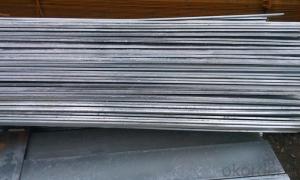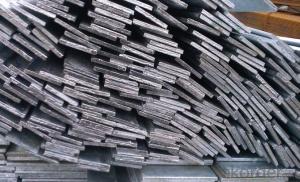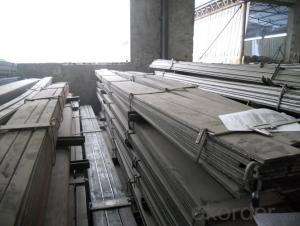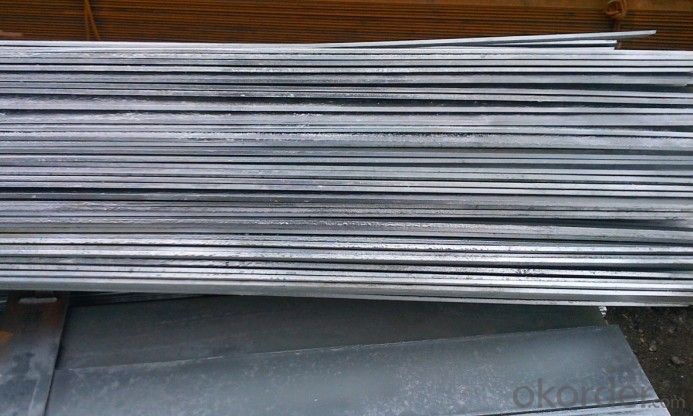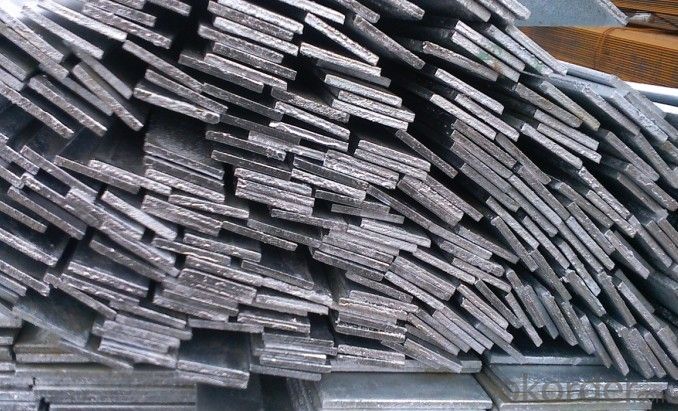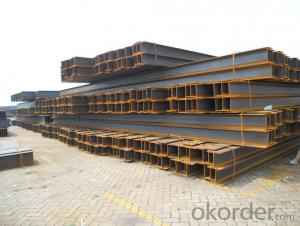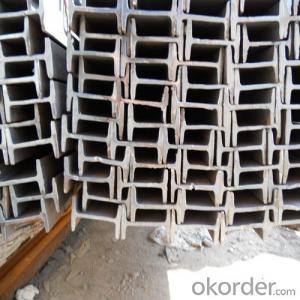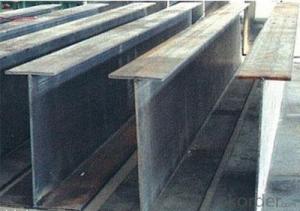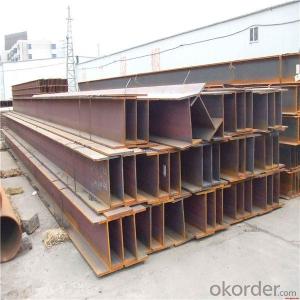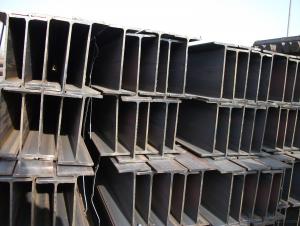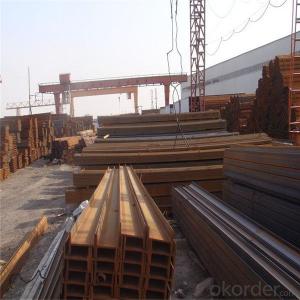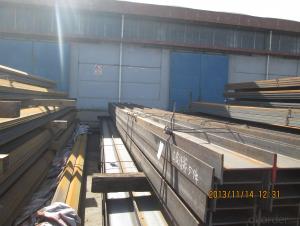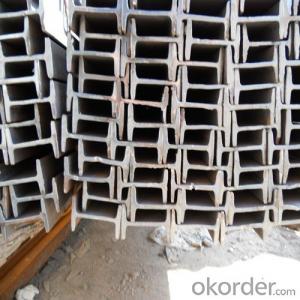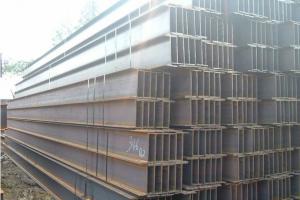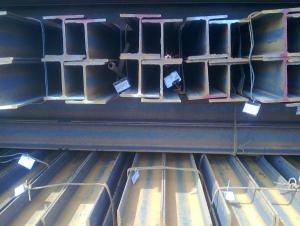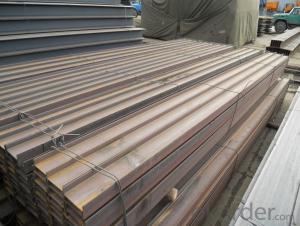H beam and gb
- Loading Port:
- China Main Port
- Payment Terms:
- TT OR LC
- Min Order Qty:
- -
- Supply Capability:
- -
OKorder Service Pledge
OKorder Financial Service
You Might Also Like
Product Description:
Product Description:
Specifications of Hot Rolled Structural Steel H Beam
1. Standard: GB700-88, Q235B2.
2. Grade: Q235, SS400 or Equivalent
3. Length: 6m,10m, 12m as following table
4. Invoicing on theoretical weight or actual weight as customer request
5.Payment: TT or L/C
6. Sizes:
SIZE(mm) | DIMENSION(kg/m) |
100*100 | 16.9 |
125*125 | 23.6 |
150*75 | 14 |
150*150 | 31.1 |
148*100 | 20.7 |
198*99 | 17.8 |
200*100 | 20.9 |
248*124 | 25.1 |
250*125 | 29 |
Usage & Applications of Hot Rolled Structural Steel H Beam
Commercial building structure ;Pre-engineered buildings; Machinery support structure; Prefabricated structure; Medium scale bridges; Ship-building structure. etc.
Packaging & Delivery of Hot Rolled Structural Steel H Beam
1. Packing: it is nude packed in bundles by steel wire rod
2. Bundle weight: not more than 3.5MT for bulk vessel; less than 3 MT for container load
3. Marks:
Color marking: There will be color marking on both end of the bundle for the cargo delivered by bulk vessel. That makes it easily to distinguish at the destination port.
Tag mark: there will be tag mark tied up on the bundles. The information usually including supplier logo and name, product name, made in China, shipping marks and other information request by the customer.
If loading by container the marking is not needed, but we will prepare it as customer request.
4. Transportation: the goods are delivered by truck from mill to loading port, the maximum quantity can be loaded is around 40MTs by each truck. If the order quantity cannot reach the full truck loaded, the transportation cost per ton will be little higher than full load.
5. Delivered by container or bulk vessel
- Q: How do you calculate the deflection of steel H-beams?
- To calculate the deflection of steel H-beams, you need to consider various factors such as the dimensions, material properties, and applied loads. The deflection of a beam is typically determined using the Euler-Bernoulli beam theory, which assumes linear elastic behavior and small deflections. Here are the steps to calculate the deflection of steel H-beams: 1. Determine the dimensions of the H-beam, including the height, width, and flange thickness. 2. Obtain the material properties of the steel, such as the Young's modulus (E) and the moment of inertia (I) of the cross-section. These values can be found in engineering handbooks or obtained from the manufacturer. 3. Identify the applied loads on the beam. These can include concentrated loads, distributed loads, or a combination of both. The magnitude and location of the loads are crucial for accurate calculations. 4. Apply the appropriate equations or formulas to calculate the deflection. For a simply supported beam with a concentrated load at the center, you can use the formula: δ = (5 * F * L^4) / (384 * E * I), where δ is the deflection, F is the applied load, L is the span length of the beam, E is the Young's modulus, and I is the moment of inertia. 5. If the beam is subjected to distributed loads, you will need to integrate the load distribution equation along the length of the beam to determine the total deflection. It is important to note that these calculations provide an approximate estimation of the deflection. For more accurate results, finite element analysis (FEA) software or specialized engineering tools may be necessary. Additionally, consulting a structural engineer or referring to relevant design codes and standards is recommended to ensure the safety and structural integrity of the H-beam in real-world applications.
- Q: How do steel H-beams perform in seismic zones?
- Steel H-beams are widely used in construction, including in seismic zones, due to their excellent performance and strength. In seismic zones, where earthquake activity is more prevalent, it is crucial to use materials that can withstand the forces generated by seismic events. Steel H-beams are specifically designed to handle these forces. Their shape, with a vertical web and horizontal flanges, provides excellent resistance to bending and torsion, making them highly effective in seismic zones. The vertical web acts as a support, distributing the load evenly across the beam, while the horizontal flanges resist bending and provide stability. Additionally, steel, as a material, has excellent ductility, which is its ability to deform without breaking. When subjected to seismic forces, steel H-beams can absorb and dissipate energy through their ductility, reducing the risk of sudden failure. This property is crucial in seismic zones, as it allows the structure to undergo some deformation while maintaining its overall integrity. Moreover, steel H-beams are often used in combination with other seismic-resistant techniques, such as moment-resisting frames or base isolation systems, to further enhance their performance. These systems work together to minimize the impact of seismic forces on the structure, ensuring the safety of the building and its occupants. In conclusion, steel H-beams perform exceptionally well in seismic zones. Their design, material properties, and compatibility with other seismic-resistant techniques make them a reliable choice for construction in areas prone to earthquakes.
- Q: Are steel H-beams suitable for seismic design?
- Yes, steel H-beams are suitable for seismic design. Steel H-beams are commonly used in seismic design due to their high strength and ductility. The H-shape of the beam provides a higher resistance to bending and torsional forces compared to other structural shapes, making it ideal for withstanding seismic loads. Additionally, steel has excellent properties for seismic resistance, such as high tensile strength and the ability to absorb and dissipate energy during an earthquake. Furthermore, steel H-beams can be designed with specific detailing requirements to enhance their seismic performance, such as the use of moment connections and proper reinforcement. Overall, steel H-beams are a reliable choice for seismic design due to their strength, ductility, and ability to withstand the forces generated by an earthquake.
- Q: How do steel H-beams contribute to the overall durability of a structure?
- Steel H-beams contribute to the overall durability of a structure by providing excellent strength-to-weight ratio, allowing for the construction of lightweight yet strong frameworks. The H-shape design distributes the load evenly, minimizing the risk of structural failure under pressure or external forces. Additionally, the high tensile strength of steel ensures resistance to corrosion, earthquakes, and other adverse conditions, thereby enhancing the longevity and stability of the entire structure.
- Q: How do steel H-beams perform in areas with high humidity?
- Steel H-beams are known for their exceptional strength and durability, making them a popular choice for various construction projects. When it comes to areas with high humidity, steel H-beams perform extremely well. One of the key advantages of steel is its resistance to moisture and corrosion. Steel H-beams are typically coated with protective finishes or galvanized to enhance their resistance to rust and corrosion. These coatings act as a barrier, preventing moisture from penetrating the surface of the beams and causing damage. High humidity can lead to the accumulation of moisture in the air, which may potentially cause structural damage to certain materials. However, steel H-beams are not susceptible to this issue. Their robust construction and corrosion-resistant coatings ensure that they can withstand the challenges posed by high humidity environments. Additionally, steel H-beams have excellent load-bearing capabilities, which are crucial for areas with high humidity. Moisture in the air can sometimes weaken certain materials, compromising their structural integrity. However, steel H-beams retain their strength and stability, even in humid conditions. It is worth noting that regular maintenance and inspections are still necessary to ensure the long-term performance of steel H-beams in high humidity areas. This includes routine checks for any signs of corrosion or damage to the protective coatings. By promptly addressing any issues that may arise, the lifespan and performance of the steel H-beams can be maximized. In conclusion, steel H-beams are a reliable choice for areas with high humidity due to their resistance to moisture, corrosion, and their excellent load-bearing capabilities. With proper maintenance, these beams can provide long-lasting structural support, even in challenging environmental conditions.
- Q: Are steel H-beams cost-effective compared to other beam options?
- Yes, steel H-beams are generally considered to be cost-effective compared to other beam options. There are several factors that contribute to this cost-effectiveness. Firstly, steel H-beams offer a high strength-to-weight ratio, meaning they can support heavy loads while being relatively lightweight themselves. This can result in cost savings in terms of transportation and installation, as well as reduced foundation requirements. Additionally, steel H-beams are durable and have a long lifespan. They are resistant to corrosion, fire, and pests, which means they require minimal maintenance and replacement over time. This can result in significant cost savings in terms of ongoing maintenance and repairs. Furthermore, steel H-beams are readily available and easy to manufacture. This means they can be produced in large quantities at a relatively low cost, making them more affordable compared to other beam options. The availability of standardized sizes and shapes also contributes to their cost-effectiveness, as it simplifies the design and construction process. It is important to note that the cost-effectiveness of steel H-beams can vary depending on the specific project requirements and the local market conditions. However, in general, steel H-beams offer a combination of strength, durability, and affordability that makes them a cost-effective choice for many construction projects.
- Q: Can steel H-beams be used for soundproofing walls?
- No, steel H-beams are not an effective material for soundproofing walls.
- Q: What are the considerations for selecting the appropriate grade of steel for H-beams?
- When selecting the appropriate grade of steel for H-beams, there are several key considerations to take into account. These considerations include the required strength and load-bearing capacity, the specific application and environmental conditions, as well as cost and availability. Firstly, it is important to determine the required strength and load-bearing capacity of the H-beams. This will depend on the specific use and the loads that the beams will be subjected to. For example, if the H-beams will be used in construction projects where they will support heavy loads, a high-strength steel grade such as ASTM A572 or ASTM A992 may be appropriate. These grades offer excellent strength and are commonly used in structural applications. Secondly, the specific application and environmental conditions must be taken into account. H-beams may be used in various industries and environments, including construction, manufacturing, and infrastructure projects. If the beams will be exposed to corrosive elements, such as in marine or coastal environments, a corrosion-resistant steel grade like ASTM A588 or ASTM A709 may be necessary to ensure long-term durability. Additionally, certain applications may require specific properties such as fire resistance or impact resistance, which will also influence the choice of steel grade. Cost and availability are also important considerations when selecting the appropriate grade of steel for H-beams. Different steel grades have varying costs and availability in the market. It is essential to consider the budget for the project and ensure that the chosen steel grade is within the cost constraints. Availability is another factor to consider, as certain steel grades may be more readily available than others, which can impact project timelines and logistics. In conclusion, the considerations for selecting the appropriate grade of steel for H-beams include the required strength and load-bearing capacity, the specific application and environmental conditions, as well as cost and availability. By carefully evaluating these factors, engineers and project managers can choose the most suitable steel grade to ensure the optimal performance and longevity of H-beams in their intended application.
- Q: How do steel H-beams perform in extreme temperatures?
- Steel H-beams perform well in extreme temperatures due to their excellent thermal conductivity and high melting point. They exhibit minimal expansion or contraction, ensuring structural integrity even in extreme heat or cold conditions.
- Q: Are steel H-beams suitable for supporting transmission towers?
- Yes, steel H-beams are suitable for supporting transmission towers. H-beams are known for their high strength-to-weight ratio, making them ideal for withstanding heavy loads and providing structural stability. Additionally, steel offers excellent durability and resistance to environmental factors, making it a reliable choice for supporting transmission towers, which require long-term stability and reliability.
Send your message to us
H beam and gb
- Loading Port:
- China Main Port
- Payment Terms:
- TT OR LC
- Min Order Qty:
- -
- Supply Capability:
- -
OKorder Service Pledge
OKorder Financial Service
Similar products
Hot products
Hot Searches
Related keywords

